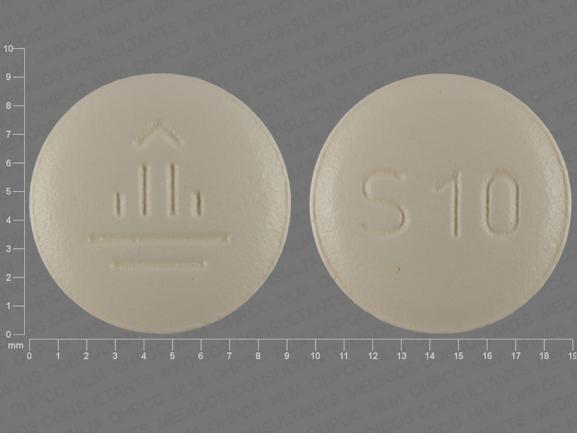Empagliflozin Side Effects
Applies to empagliflozin: oral tablet.
Serious side effects of empagliflozin
Along with its needed effects, empagliflozin may cause some unwanted effects. Although not all of these side effects may occur, if they do occur they may need medical attention.
Check with your doctor immediately if any of the following side effects occur while taking empagliflozin:
More common side effects
- bladder pain
- bloody or cloudy urine
- change in the color, amount, or odor of vaginal discharge
- difficult, burning, or painful urination
- frequent urge to urinate
- itching, stinging, or redness of the vaginal area
- lower back or side pain
- pain during sexual intercourse
Less common side effects
- discharge with a strong odor from the penis
- increased volume of pale, dilute urine
- redness, itching, swelling, or pain around the penis
- waking to urinate at night
Rare side effects
- anxiety
- blurred vision
- chills
- cold sweats
- confusion
- decreased urination
- dizziness, faintness, or lightheadedness when getting up suddenly from a lying or sitting position
- fast heartbeat
- headache
- increased hunger
- nausea
- nightmares
- rapid breathing
- seizures
- shakiness
- slurred speech
- sweating
- unusual tiredness or weakness
Incidence not known
- dry mouth
- fever
- flushed, dry skin
- fruit-like breath odor
- increased thirst
- itching, skin rash
- large, hive-like swelling on the face, eyelids, lips, tongue, throat, hands, legs, feet, or genitals
- loss of appetite
- loss of consciousness
- pain, tenderness, redness, or swelling of the area between the anus and genitals
- redness of the skin
- stomach pain
- sunken eyes
- trouble breathing
- unexplained weight loss
- vomiting
- weight gain
- wrinkled skin
Other side effects of empagliflozin
Some side effects of empagliflozin may occur that usually do not need medical attention. These side effects may go away during treatment as your body adjusts to the medicine. Also, your health care professional may be able to tell you about ways to prevent or reduce some of these side effects.
Check with your health care professional if any of the following side effects continue or are bothersome or if you have any questions about them:
Less common side effects
- body aches or pain
- cough
- loss of voice
- muscle pain or stiffness
- runny or stuffy nose
- sneezing
For healthcare professionals
Applies to empagliflozin: oral tablet.
General adverse events
The most common adverse reactions (incidence of greater than 5%) were urinary tract infections, female genital mycotic infections, hypoglycemia, and adverse reactions related to volume depletion. Pediatric patients experienced a higher incidence of hypoglycemia.[Ref]
Cardiovascular
- Postmarketing reports: Hypotension
Dermatologic
- Common (1% to 10%): Pruritus, rash
- Postmarketing reports: Skin reactions including angioedema and urticaria
Gastrointestinal
- Common (1% to 10%): Nausea
- Postmarketing reports: Constipation
Genitourinary
- Very common (10% or more): Female urinary tract infections (up to 18.4%)
- Common (1% to 10%): Female genital mycotic infections, increased urination, male urinary tract infections
- Uncommon (0.1% to 1%): Phimosis, male genital mycotic infections, nocturia, dysuria
- Postmarketing reports: Urosepsis, pyelonephritis, necrotizing fasciitis of the perineum (Fournier's gangrene)
Hematologic
- Common (1% to 10%): Increased hematocrit
Hepatic
- Frequency not reported: Hepatic injury
Hypersensitivity
- Postmarketing reports: Angioedema, hypersensitivity reactions
Metabolic
- Very common (10% or more): Hypoglycemia, especially in combination with other glucose lowering therapies (up to 41.3%), adverse reactions related to volume depletion (up to 11.4%)
- Common (1% to 10%): Increased low-density lipoprotein cholesterol, dyslipidemia
- Postmarketing reports: Ketoacidosis
The risk of hypoglycemia (i.e., blood glucose less than 54 mg/dL) was higher in pediatric patients.
Reactions related to volume depletion included decreased ambulatory blood pressure, decreased systolic blood pressure, dehydration, hypotension, hypovolemia, orthostatic hypotension, and syncope with the highest rates occurring in patients with heart failure.
In clinical studies, ketoacidosis was not immediately recognized, especially in patients with type 1 diabetes, and treatment was delayed because presenting blood glucose levels were lower (often less than 250 mg/dL [14 mmol/l]) than those typically expected. In some, but not all cases, patients had an identifiable precipitating risk factor for ketoacidosis
Musculoskeletal
- Common (1% to 10%): Arthralgia
Other
- Common (1% to 10%): Thirst
- Frequency not reported: Lower limb amputation
Renal
- Very rare (less than 0.01%): Tubulo-interstitial nephritis
- Frequency not reported: Increased serum creatinine, decreased estimated GFR
- Postmarketing reports: Acute kidney injury, urosepsis, pyelonephritis
Respiratory
- Common (1% to 10%): Upper respiratory tract infection
References
1. (2023) "Product Information. Jardiance (empagliflozin)." Boehringer Ingelheim Ltd
2. (2023) "Product Information. Jardiance (empagliflozin)." Boehringer Ingelheim, SUPPL-42
3. (2024) "Product Information. Jardiance (empagliflozin)." Boehringer Ingelheim Pty Ltd
Frequently asked questions
More about empagliflozin
- Check interactions
- Compare alternatives
- Reviews (345)
- Dosage information
- During pregnancy
- Drug class: SGLT-2 inhibitors
- Breastfeeding
- En español
Patient resources
Other brands
Professional resources
Other brands
Related treatment guides
Further information
Empagliflozin side effects can vary depending on the individual. Always consult your healthcare provider to ensure the information displayed on this page applies to your personal circumstances.
Note: Medication side effects may be underreported. If you are experiencing side effects that are not listed, submit a report to the FDA by following this guide.

